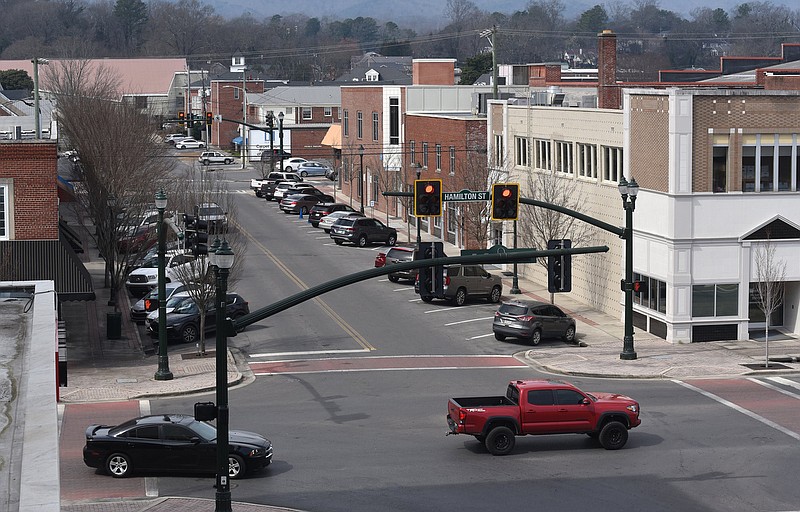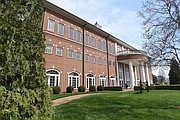Dalton, Georgia may be America's carpet capital and Cleveland, Tennessee one of the most improved economic performing U.S. cities, but the two towns could soon lose their status as metropolitan areas.
Two cities in the Chattanooga region are among 144 across the country about to be downgraded to micropolitan areas under a new definition proposed by the federal government.
The change could be more than just a matter of semantics. Officials in some of the affected cities worry it could have adverse implications for federal funding and economic development.
Under the new proposal, a metro area would have to have at least 100,000 people in its core city to count as a Metropolitan Statistical Area, or MSA. That's double the 50,000-person threshold that has been in place for the past 70 years.
Cities formerly designated as metros with core populations between 50,000 and 100,000 people, such as Cleveland, Dalton and Rome, Georgia, would be changed to "micropolitan" statistical areas instead.
A committee of representatives from federal statistical agencies recently made the recommendations to the Office of Management and Budget, saying it's purely for statistical purposes and not to be used for funding formulas. As a practical matter, however, that is how it's often used.
Tennessee metro areas
1. Nashville: 1,933,8602. Memphis: 1,344,9103. Knoxville: 869,5254. Chattanooga: 566,1535. Kingsport-Bristol-Bristol(VA): 511,4046. Clarksville: 311,0737. Johnson City: 203,6978. Jackson: 178,6449. Morristown: 142,74910. Cleveland: 126,801Source: U.S. Bureau of Census, 2019 population estimates for metro areas
Several housing, transportation and Medicare reimbursement programs are tied to communities being metropolitan statistical areas, or MSAs, so the designation change concerns some city officials. Tim Kuhn, director of the Tennessee State Data Center, said some economic data regularly reported by the labor department and other agencies is compiled first or only for metro areas such as Chattanooga, Nashville, Knoxville, Memphis and the Tri-cities in Upper East Tennessee. Rural communities also are concerned that more micropolitan areas would increase competition for federal funding targeting rural areas.
Many retail and service businesses choose to look first at expanding in metro cities over smaller micropolitan areas, so the change in status may leave the affected areas off of some business expansion lists.
The change would downgrade more than a third of the current 392 MSAs, including Cleveland, Morristown and Jackson in Tennessee and Dalton, Rome, Albany, Valdosta, Hinesville and Brunswick in Georgia. In Alabama, a half dozen metro areas, including Decatur, Gadsden and Florence-Muscle Shoals in North Alabama, would lose their metro status.
In a letter to the federal budget office, the mayor of Opelika, Alabama, urged that the proposal be dropped.
"The risk to vital services within our community, our state and the millions of impacted Americans across this country far outweigh any limited statistical value that might be gained from this proposal," Mayor Gary Fuller said.
Georgia metro areas
1. Atlanta–Sandy Springs–Roswell: 6,018,7442. Augusta (GA–SC): 608,9803. Savannah: 393,3534. Columbus (GA–AL): 321,0415. Macon: 229,9966. Athens: 213,7507. Gainesville: 204,4418. Warner Robins: 185,4099. Valdosta: 147,29210. Albany: 146,72611. Dalton: 144,72412. Brunswick: 118,77913. Rome: 98,49814. Hinesville: 80,994Source: U.S. Bureau of Census, 2019 population estimates for metro areas
Officials in Cleveland and Dalton downplayed the definition change, noting that both of those cities will still be part of the combined statistical metropolitan area for Chattanooga, which now includes metro Chattanooga, Cleveland and Dalton. Chattanooga's combined statistical metropolitan area is projected to have nearly 1 million residents when the 2020 census figures are released later this year, and the areas are already working together.
"We're part of the bigger Chattanooga economic region from an economic development perspective, so we've been marketing as a part of the overall Chattanooga region for the past five years," said Doug Berry, vice president of economic development for the Cleveland/Bradley County Chamber of Commerce. "More companies are looking for metro areas to locate to ensure they have adequate access to an employment and customer base to support their operations. But as long as we're all cooperating regionally, I think we should be in good shape."
A new study by the Milken Institute said Cleveland, Tennessee, enjoyed the biggest jump in the annual ranking of Best-Performing Cities, rising from No. 190 in 2020 to No. 58 this year. Despite the recognition, Berry concedes, "there may be a bit of a damage to our community pride" from the loss of the metro status in Cleveland. But he said he often gets calls from people confusing metro Cleveland in Tennessee, which has a city population estimated in 2019 at 45,504, with its much bigger namesake in Ohio, which had a 2019 population of 381,009.
"A lot of people think they are calling about Cleveland, Ohio, until they start talking to me and figure out pretty quickly they are not talking to someone from Ohio," Berry quipped.
In Dalton, Mayor David Pennington said he isn't particularly worried about the change in the way statisticians label an area, especially given Dalton's leadership place for the $388 billion-a-year global floorcovering industry.
"We're still the Carpet Capital, and right now with housing coming back and the economy improving, we're expecting a good year in 2021," Pennington said.
The city of Dalton had an estimated population of 33,665 in 2019 and metro Dalton, which includes all of Whitfield and Murray counties, had an estimated population in 2019 of 144,724.
The U.S. Bureau of Census now defines a metropolitan statistical area as one or more counties that contain a city of 50,000 or more inhabitants, or contain a Census Bureau-defined urbanized area (UA) and have a total population of at least 100,000 (75,000 in New England). Counties containing the principal concentration of population - the largest city and surrounding densely settled area - are components of the MSA.
Under the new proposal, a metro area would have to have at least 100,000 people in its core city to count as an MSA.
Statisticians say the change in designations has been a long time coming, given that the U.S. population has more than doubled since 1950. Back then, about half of U.S. residents lived in metros; now, 86% do.
"Back in the 1950s, the population it took to create a metro area is different than it would be to create a metro area in 2020," said Rob Santos, president of the American Statistical Association.
Some demographers aren't sold on the idea of changing the definition of a metro area.
"It seems like everything is ad hoc, rather than having been determined by serious research," said Kenneth Johnson, a senior demographer at the University of New Hampshire. "The definitions have been relatively stable since 1950. All of the sudden, they change these, and at least in my mind, there isn't a compelling research-based process that has driven this decision."
Nancy Potok, a former chief statistician of the Office of Management and Budget who helped develop the new recommendations, acknowledged that officials in some cities will be upset with the changes because they believe it could hurt efforts to lure jobs or companies to their communities.
"There are winners and losers when you change these designations," Potok said. "A typical complaint comes from economic development when you are trying to attract investments. You want to say you are part of a dynamic MSA. There's a perception associated with it. If your area gets dumped out of an MSA, then you feel disadvantaged."
The Associated Press contributed to this report.
Contact Dave Flessner at dflessner@timesfreepress.com or at 423-757-6340.


